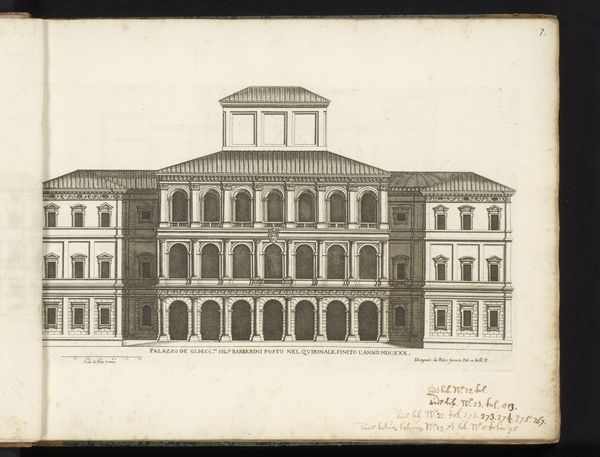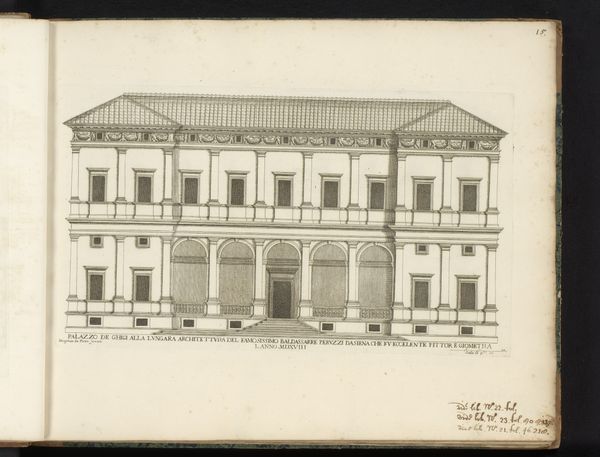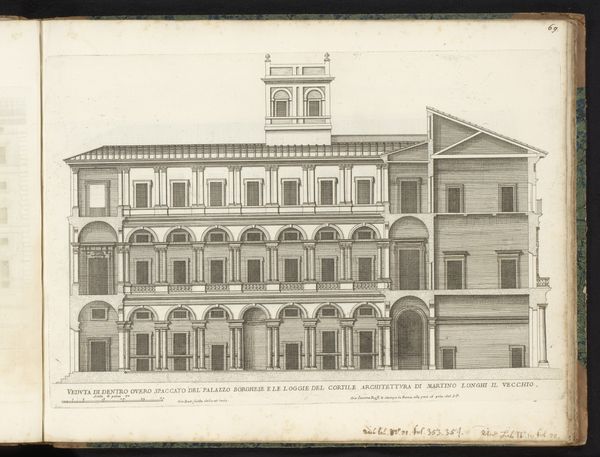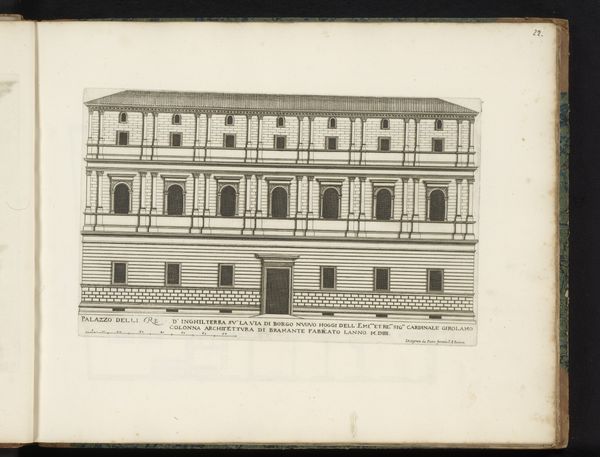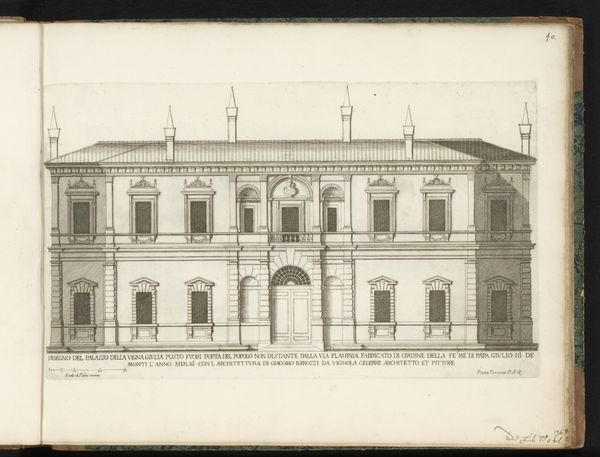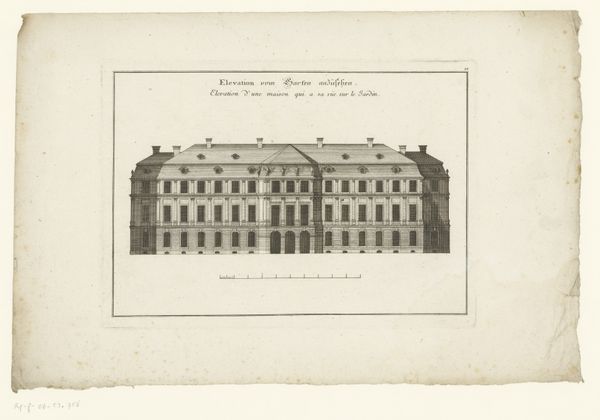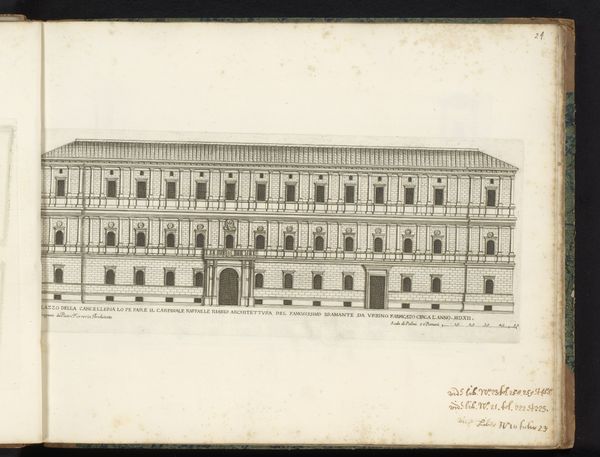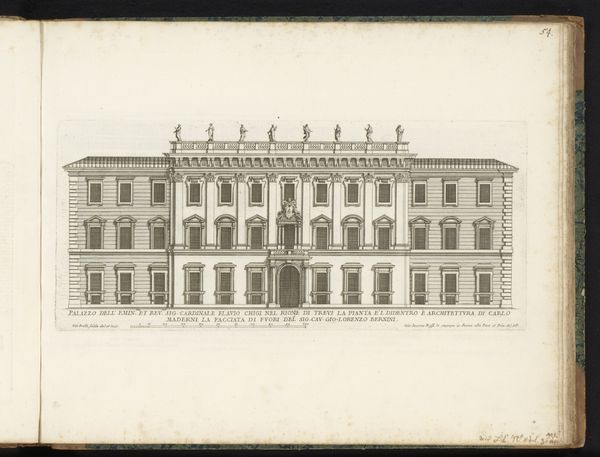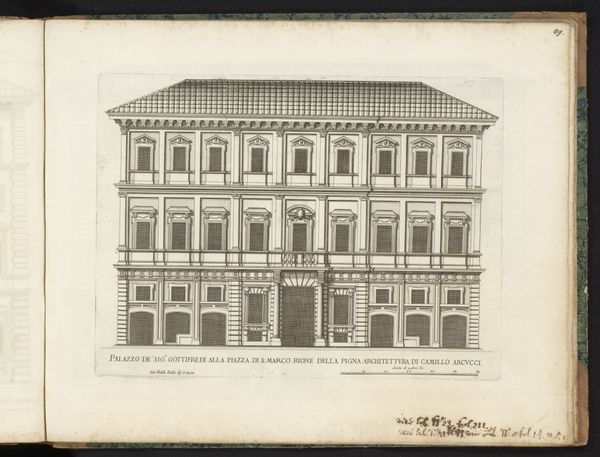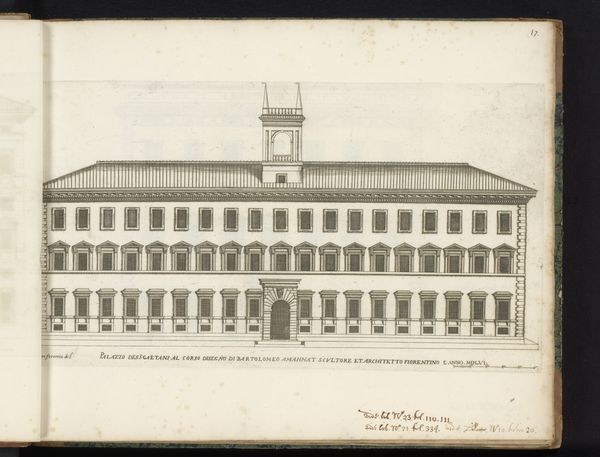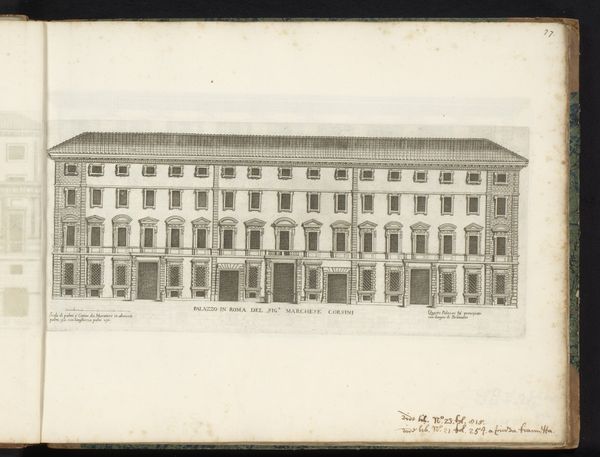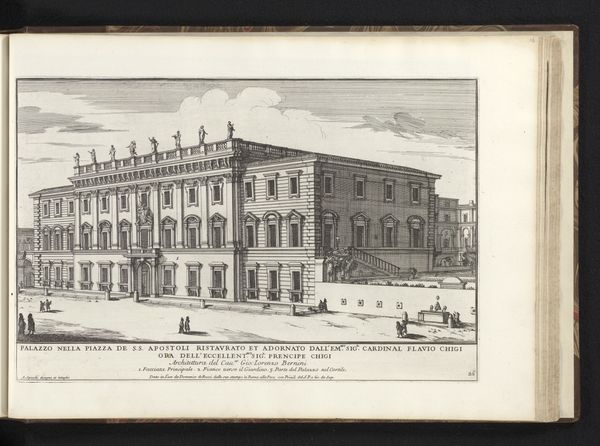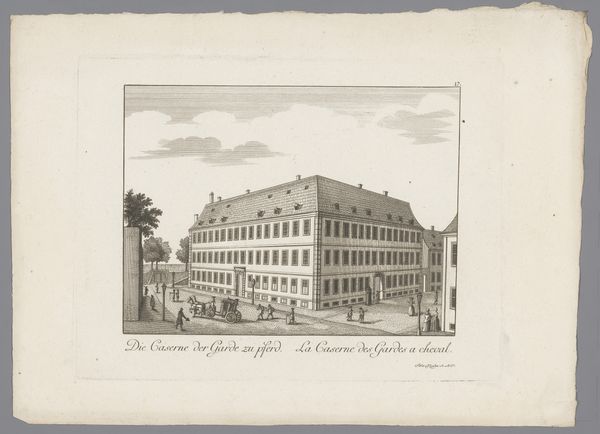
Verticale doorsnede en de gevel van binnenplaats van Palazzo Altemps after 1655
0:00
0:00
giovannibattistafalda
Rijksmuseum
print, etching, architecture
#
baroque
# print
#
etching
#
line
#
cityscape
#
architecture
Dimensions: height 172 mm, width 445 mm
Copyright: Rijks Museum: Open Domain
Curator: The etching before us, "Verticale doorsnede en de gevel van binnenplaats van Palazzo Altemps," or "Vertical Section and Façade of the Palazzo Altemps Courtyard," created by Giovanni Battista Falda after 1655, presents an intricate look at Roman architecture. The sheer linearity is striking! Editor: It does! The cool, precise lines suggest functionality. What was the etching's function at that time? I mean, what purpose would such architectural precision serve outside of, say, city planning or as blueprints for workers? Curator: Absolutely, this detailed rendering served not only as a visual record but also as a form of social commentary. The Palazzo Altemps was a seat of power, so these kinds of detailed prints became crucial for disseminating knowledge of Baroque structures. How does this intersect with your thinking? Editor: It’s all in the material. The printmaking process allowed for mass production and dissemination. Its meticulous depiction, highlighting not only aesthetics but structural details, brings labor and production sharply into focus. Someone physically carved this image. Curator: Good point. There is an undeniable emphasis on labor as you have said. Look how the facade invites discussions around the cultural capital embedded in structures of this kind. It is about Baroque aesthetics, certainly. But let's think about the labor of creating those structures, the socioeconomic systems allowing its existence... the intersections between art, architecture, class, and power! Editor: I would go even further. Beyond the architecture, this piece offers insight into labor beyond architectural creation; it underscores the role of printmaking itself. Curator: Fascinating. Editor: Seeing this Palazzo’s bones laid bare—the sheer amount of work it entails... It’s very compelling. I hadn’t really considered that so literally before now! Curator: Considering that Palazzo Altemps now operates as a museum, Falda's rendering offers a multi-layered insight into a historical and artistic period from the lens of today.
Comments
No comments
Be the first to comment and join the conversation on the ultimate creative platform.
